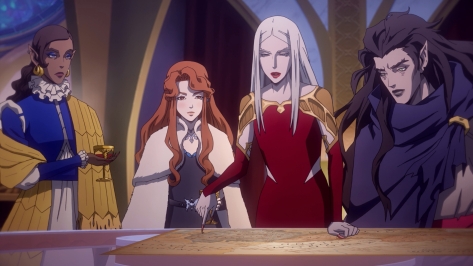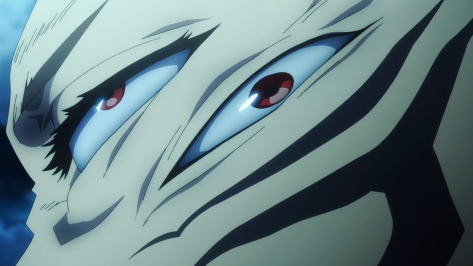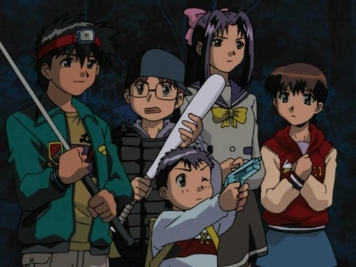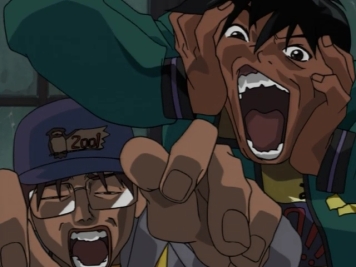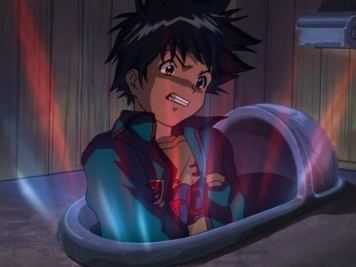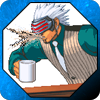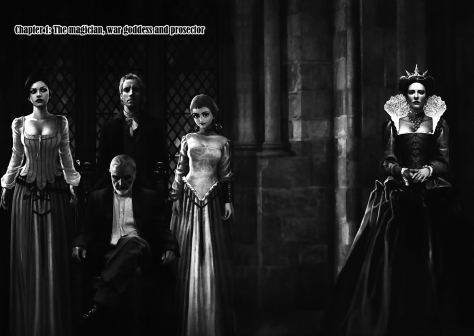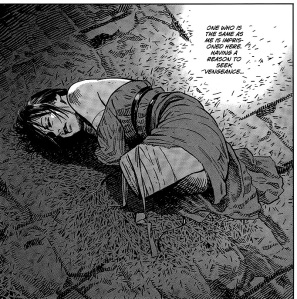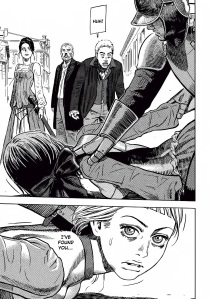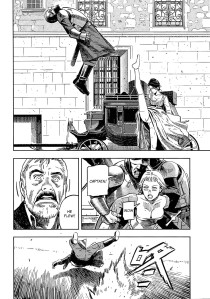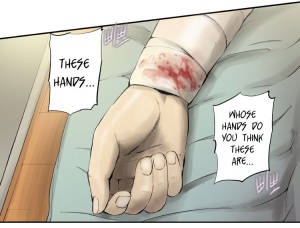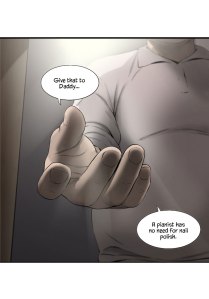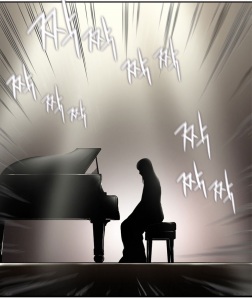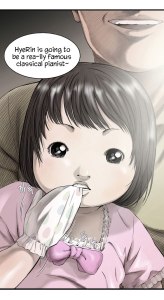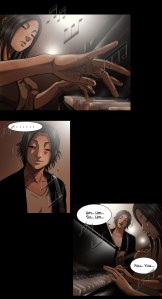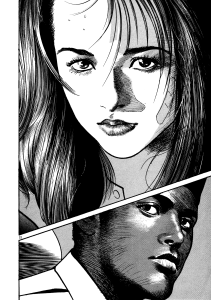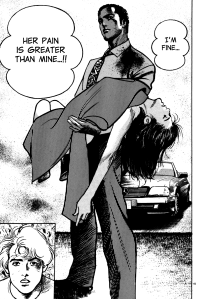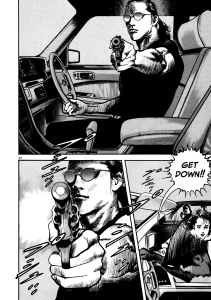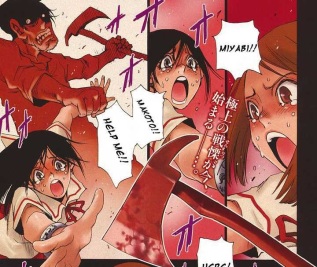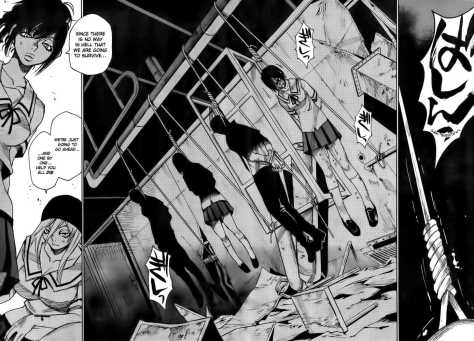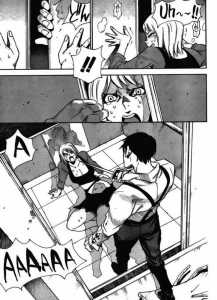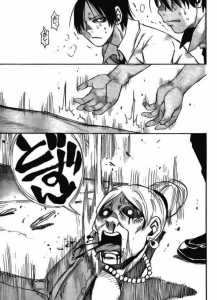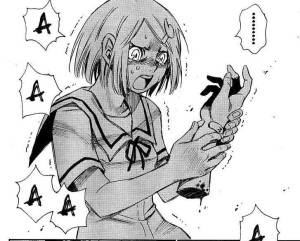Japanese Title: Biohazard: Infinite Darkness
Related: Resident Evil: Degeneration
Resident Evil: Vendetta
Watched in: English
Length: 4 episodes
Positives:
- Good acting
- The video game-like CG works better than most CG anime
Negatives:
- Thin on character
- Probably won’t mean much to non-franchise fans
(Request an anime for review here.)
This is an impromptu review urged on by a random recommendation from Netflix. At only four episodes long, Resident Evil: Infinite Darkness makes for a good pit stop while I work on something longer.
The Resident Evil franchise has a decent history of CG anime films dating back to 2008 (as well as those hilarious live-action films). It follows the same vein of Final Fantasy: Advent Children in going for a more realistic visual style compared to your typical CG anime, emulating a cutscene. They come from a time when the in-game graphics were still quite removed from cutscenes, so to see a “movie-length” cutscene was the ultimate fan service. That said, the Resident Evil films never looked as good as those top tier cutscenes out of something like a Blizzard game or those E3 trailers. Infinite Darkness, however, looks much better than previous entries. Mouth animations are still a little too smooth and atmospherics have some way to go, but it’s suitable for something without a Pixar budget.
The quality of CG anime hasn’t been good overall, to put it nicely, and with the likes of Ex-Arm amongst recent releases, the trajectory doesn’t seem to head upwards. CG anime quality is particularly odd because we have had plenty of great non-anime CG series in the past. Star Wars: The Clone Wars is one of the most famous examples, looking better in 2008 than almost all CG anime today – never mind comparisons to the final season in 2020 (choice of visual style is important in masking CG shortcomings on a budget). On a mini-series front, we have the likes of Love, Death, and Robots (highly recommended, by the way) that manages to exhibit a variety of visual styles to a masterclass level. These don’t look like anime, though. On the other hand, Advent Children doesn’t have a cartoony style and most would still associate it with anime. So why can’t CG anime be better?
Whether it is for budgetary reasons, inexperienced crews (*cough* Ex-Arm) or a lack of effort, CG anime leaves much to be desired. Beastars is one of few cases to not bleed the eyes. Of course, the West has had its share of problems. There are dozens – maybe hundreds – of children’s CG cartoon that you’ve never heard of with some serious jank. They’ve had issues even amongst the successful series. Animation in The Dragon Prince season one was like watching a Pentium 1 PC try to run Crysis.
All of this is to say that while Resident Evil: Infinite Darkness is an anime and is more visually appealing than most CG anime, it still doesn’t feel like one. It can’t be the subject matter – military versus zombies isn’t foreign to anime. Is it not capital A anime enough? Does it need screeching lolis (preferably eaten by zombies) to feel like anime? Well, no, of course not. Do the eyes need to be bigger than the brain? “What is anime” is a much harder question to answer than one would imagine. To me, I suppose it doesn’t feel like anime because it doesn’t move like anime. There is that indescribable quality which you recognise when you see it. Similarly, when does it go from a cartoon drawing to manga? Plenty of manga don’t fit the standard parameters should someone describe the manga style.
Funnily enough, all animation is “anime” in Japanese. Here is a great video on the subject by Kenny Lauderdale.
So, Resident Evil: Infinite Darkness, regardless of whether it feels like anime, is it any good? It’s okay. A decent action series with zombies, a government conspiracy, and plenty for fans of the franchise. That latter point is both its biggest draw and biggest repellent. Fans of Resident Evil will like seeing classic characters Leon and Claire on screen in a story that occurs between Resident Evil 4 and Resident Evil 5. It follows a new outbreak in southern Asia and the cover up afterwards, leading to an infection in the White House. The president calls in Leon, the man who saved his daughter, to join the operation. Meanwhile, Claire investigates the case on her own for a humanitarian organisation.
For fans, Infinite Darkness will be fine, but outsiders will likely find the characters thin. This anime – as is often the case with tie-in media – relies on the original material to build the world and characters. “You know their personalities, their backstories, their struggles, their ghosts already from playing the games, so why should we waste time on establishing them again?” The result is an average zombie flick, enjoyed but likely forgotten by most next week. If you need a zombie fix and want something more complete, I recommend Train to Busan.
Overall Quality – Medium
Recommendation: For Resident Evil fans. As a series predicated on familiarity with the franchise, Resident Evil: Infinite Darkness is decent fan service to aficionados.
(Request reviews here. Find out more about the rating system here.)
Awards: (hover over each award to see descriptions; click award for more recipients)
Positive: None
Negative: None
















